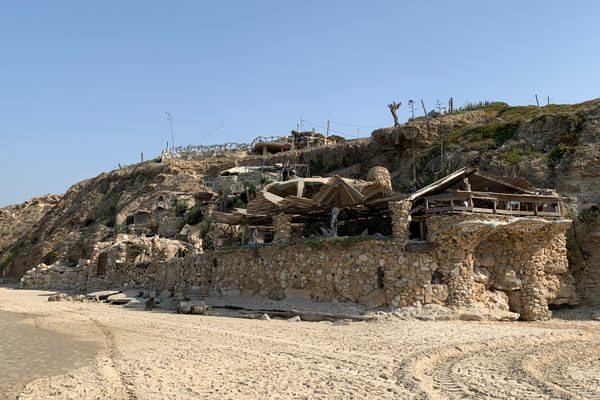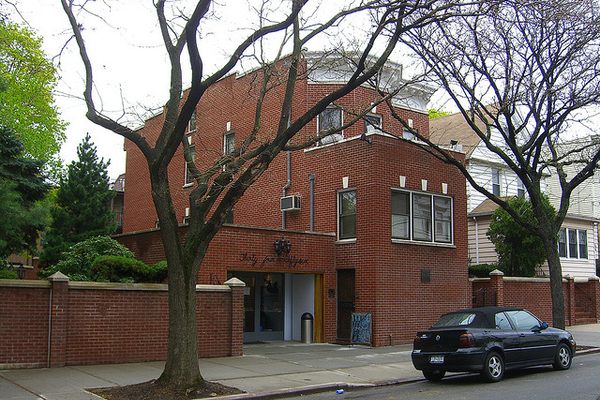Wonder Is Everywhere: Inside Oppenheimer’s Los Alamos, the End of the Hermit House, and More From Around the Web
Get a peek into what we’re obsessed with right now.
Wonder is everywhere. That’s why, every other week, Atlas Obscura drags you down some of the rabbit holes we encounter as we search for our unusual stories. We highlight surprising finds, great writing, and inspiring stories from some of our favorite publications.

An Exclusive Look at the Los Alamos Lab Where Oppenheimer Created the Bomb
by Jennie Rothenberg Gritz, Smithsonian Magazine
Los Alamos, New Mexico, is still an active national laboratory, and the sites where Manhattan Project scientists developed the first nuclear weapon remain off limits to the public. But photographer Minesh Bacrania, a physicist who worked in the lab’s nonproliferation division from 2006 to 2012, received special permission to take photographs for Smithsonian Magazine, providing a never-before-seen glimpse into this secret history.
Sudan’s Cultural Heritage in Peril as Fighting Rages
by Adam Makary, Reuters
In Sudan’s capital, Khartoum, precious books in a major library have been burned and the national museum has been cut off for weeks by fighting. In Darfur, another museum is at risk from seasonal rains after projectiles punctured the roof, Reuters reports.
The Surprisingly Sinister History Behind Texas’s Cliff Chirping Frog
by Kristen Steenbeeke, Texas Monthly
“The cliff chirping frog is a bit of an oddball,” writes Kristen Steenbeeke—but the man who discovered the species is even more of a surprise, a 19th-century naturalist who led a life of crime while conducting serious science on the Texas frontier.


‘Entrance to Underworld’ Discovered
by Kristina Killgrove, LiveScience
Scientists using ground scanning technology have uncovered a labyrinth of chambers and tunnels under a Catholic church in southern Mexico. They believe the site was constructed more than a thousand years ago but the Zapotec people as a place to honor their ancestors.
Rare Pteranodon Skeleton Expected to Sell for Millions
by Karen K. Ho, Art News
In 2002, researchers in Kansas discovered the remarkably well-preserved remains of a pteranodon, a bird-like reptile that lived 85 million years ago, with a wing span of more than 20 feet. The skeleton, nicknamed Horus, will be auctioned off by Sotheby’s. The selling price is estimated to be $4 to $6 million.
Metal Detectorists Find Buried WWII Aircraft in Ukraine
by James Landale, BBC
Amid the war in Ukraine, a team of researchers has discovered eight British Hurricanes in a forest ravine south of Kyiv. The aircraft were sent to the Soviet Union by Britain after Nazi Germany invaded the country in 1941. “The Hurricanes are a symbol of British assistance during the years of the Second World War, just as we are very appreciative of British assistance nowadays,” says Valerii Romanenko of the National Aviation Museum of Ukraine, which is leading the excavation.

Israel Moves to Evict Artist From ‘The Hermit House’
by Ilan Ben Zion and Ariel Schalit, Associated Press
Over half a century, Nissim Kahlon has transformed a tiny cave on a Mediterranean beach into an elaborate underground labyrinth filled with chiseled tunnels, detailed mosaic floors and a network of staircases and chambers. Now, Israel’s government wants him out.
Louis Armstrong’s Dazzling Archive Has a New Home—His
by Nate Chinen, All Things Considered
Louis Armstrong’s modest home in Corona, Queens, has long been a place of pilgrimage for fans. Now the neighborhood is also home to the Louis Armstrong Center, a $26 million facility that will house the 60,000 items in Satchmo’s archive including photographic scrapbooks, homemade recordings, and his famous trumpet.


















Follow us on Twitter to get the latest on the world's hidden wonders.
Like us on Facebook to get the latest on the world's hidden wonders.
Follow us on Twitter Like us on Facebook